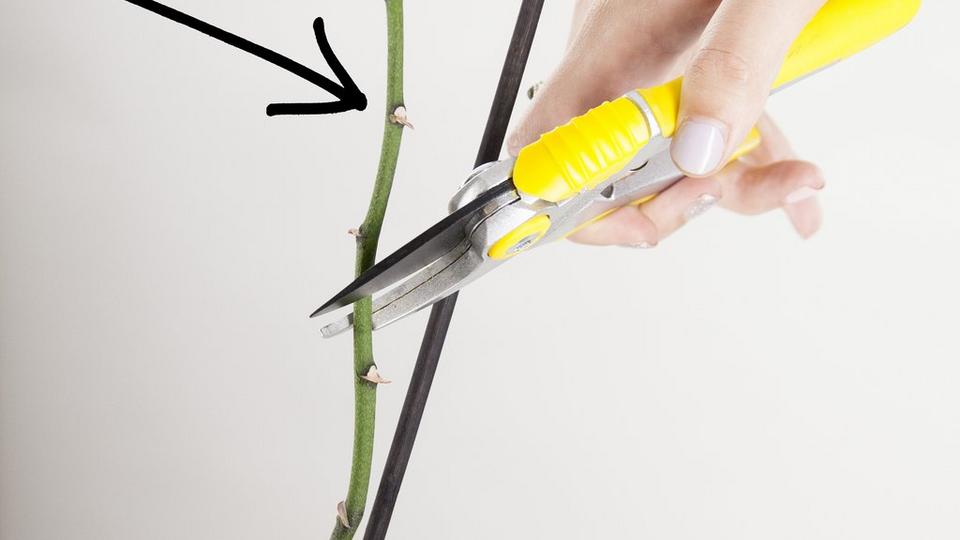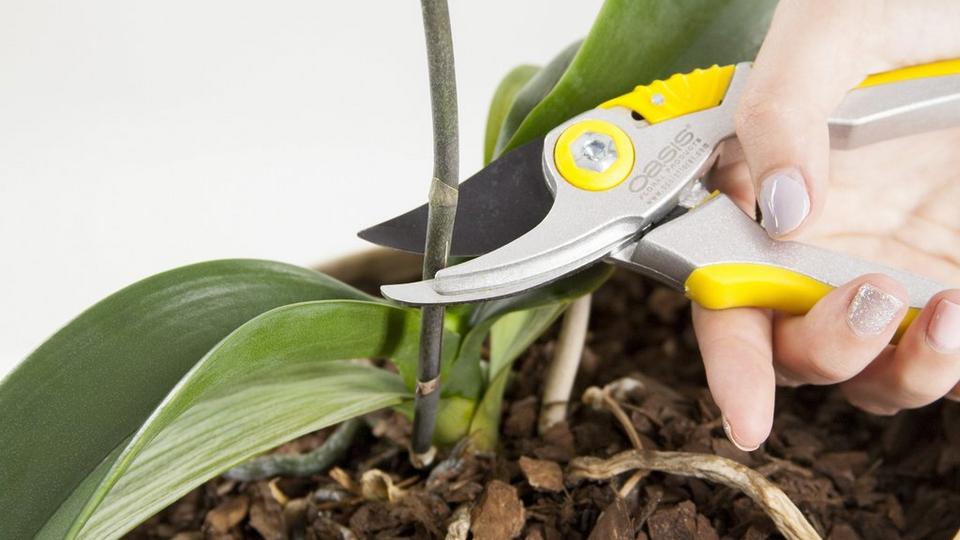The Ultimate Guide to Orchids
Distinctive, bright and beautiful – there are a lot of reasons orchids are so popular. But they do have a bit of reputation for being tricky to care for, a reputation that really isn’t deserved. All an orchid needs is the right TLC and it can last years and years. Stick with us and we’ll fill you in on how, with this guide to all things orchid, from how to keep them thriving to the different types.
Did you know?
- There are around 28,000 species in the orchid family, or Orchidaceae to give it the proper scientific name!
- There’s an orchid that looks exactly like a bee (called the bee orchid, of course)
- Orchids are usually tropical plants, but there are at least four species living north of the Arctic Circle
Orchid meaning: what do orchids symbolise?
Like many blooms the meaning of an orchid might change according to its colour, so a white orchid might signify innocence, while red can indicate passion. What all orchid’s symbolise though is a refined beauty. This idea emerged during the Victorian period when these expensive flowers were worn by those dressing to impress. A favourite for gent’s buttonholes the orchid combined was striking but simple: a guaranteed eyecatcher.
Thanks to Mandy Kirkby’s The Language of Flowers for this handy bit of floral history.
Orchid Types
Here’s some of the most popular varieties available to buy in the UK:
Vanda Orchid
Phalaenopsis Orchid
Cymbidium Orchid
Dendrobium Orchid
How to water
Although orchids are commonly found growing wild in tropical rainforests, they do not need heavy watering.
In fact, the most common way people harm an orchid is by over watering. When it comes to watering an orchid, the golden rule is to ensure the plant is not constantly sitting in water so that it causes the roots to rot.
Here are three ways you can water an orchid plant…
Submerging
Depending on where the orchid is placed and the time of year, submerge it once a week
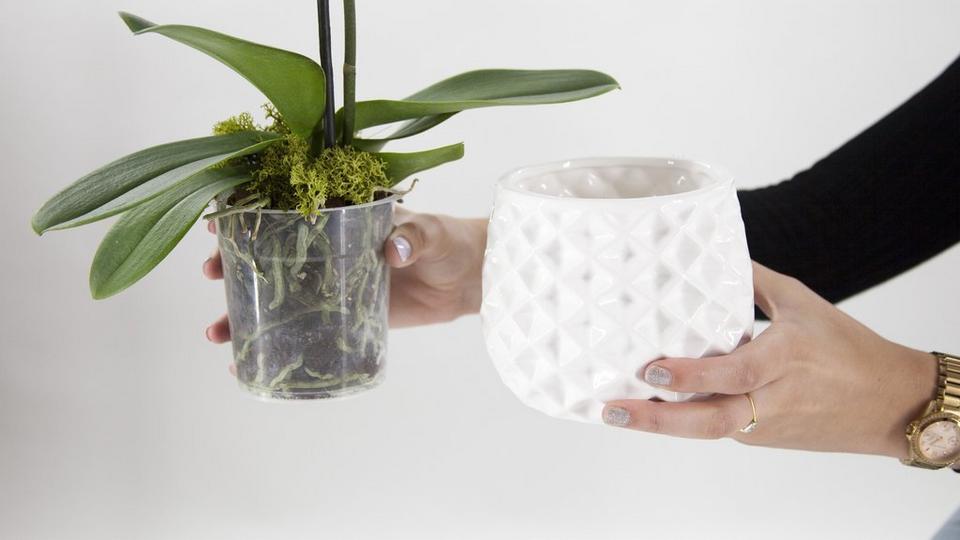
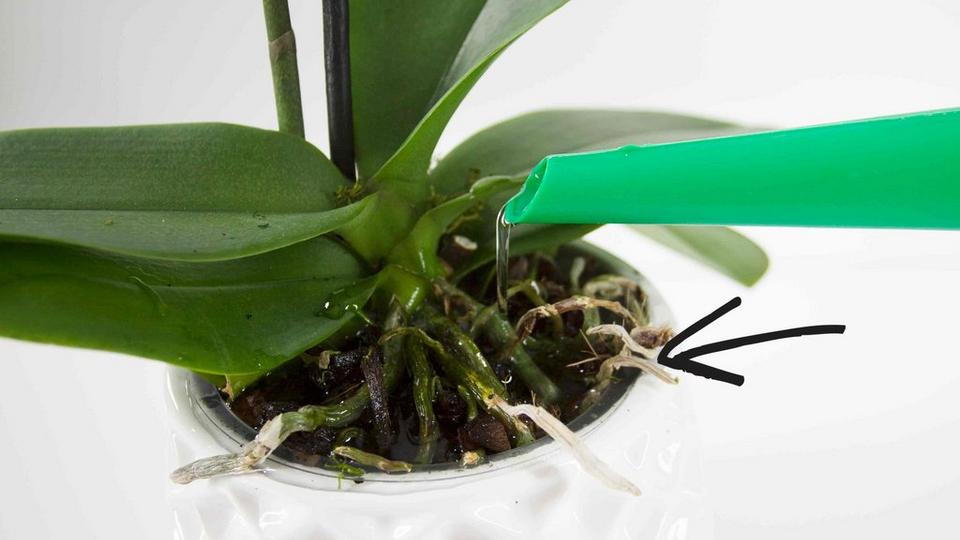
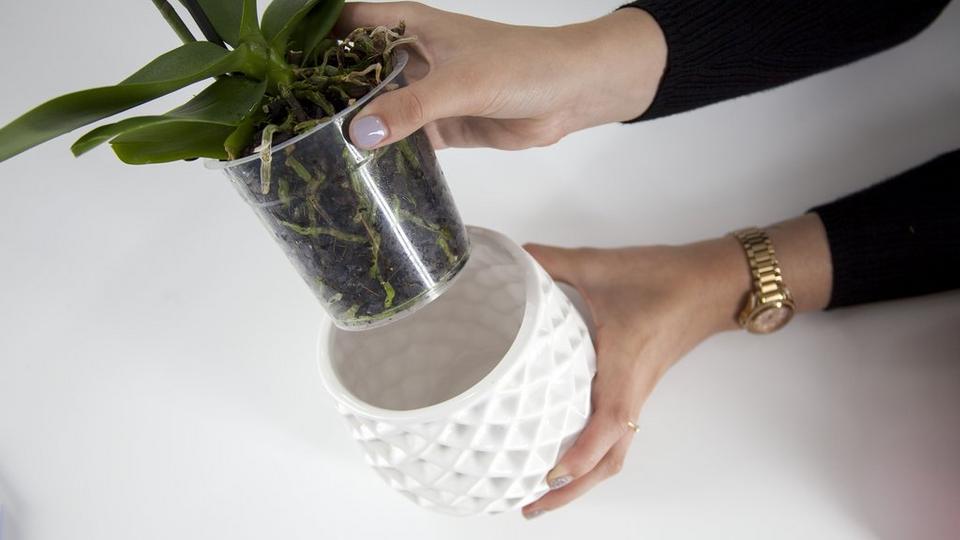
Ice cubes
Yes, that’s right. Ice cubes straight from a small/medium sized ice cube tray are a great way to water orchids. ‘Why would you use ice cubes?’ we hear you ask. Well using ice cubes will…
- Improve absorption
- Prevent root rot
- Avoid overwatering
- Make life easier!
How often should you water with ice cubes?
- Depending on the season and where the orchid is kept, pop one cube twice a week on top of the potting medium underneath the leaves.
- Be mindful to ensure no water is left standing in the pot and if possible, remove any excess water if you notice any water pooling on the orchid. You can also tell that there is too much water if the pot has become very heavy and sloshes when you tilt it.
Pouring
Depending on seasonality and where your plant is situated, adding ¼ glass of distilled or boiled and cooled tap water every week is suitable
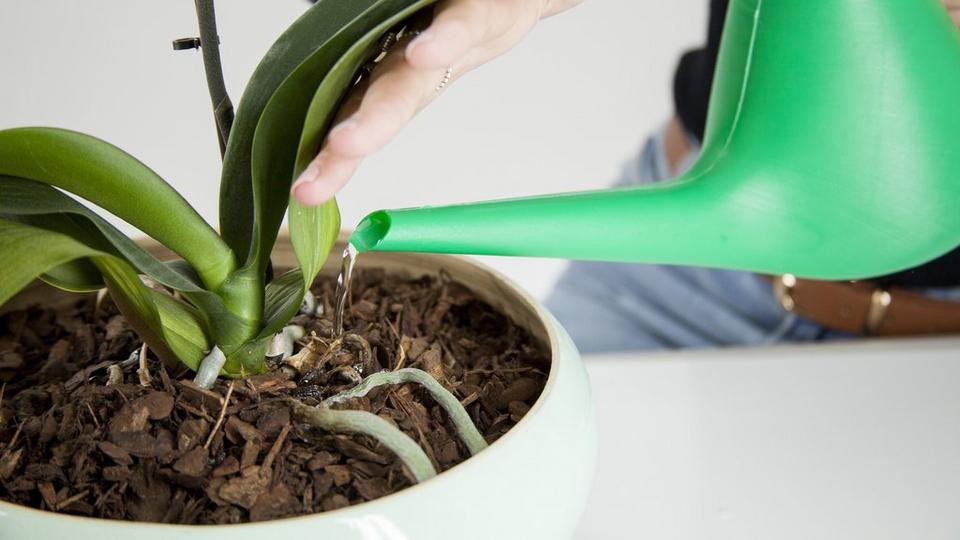
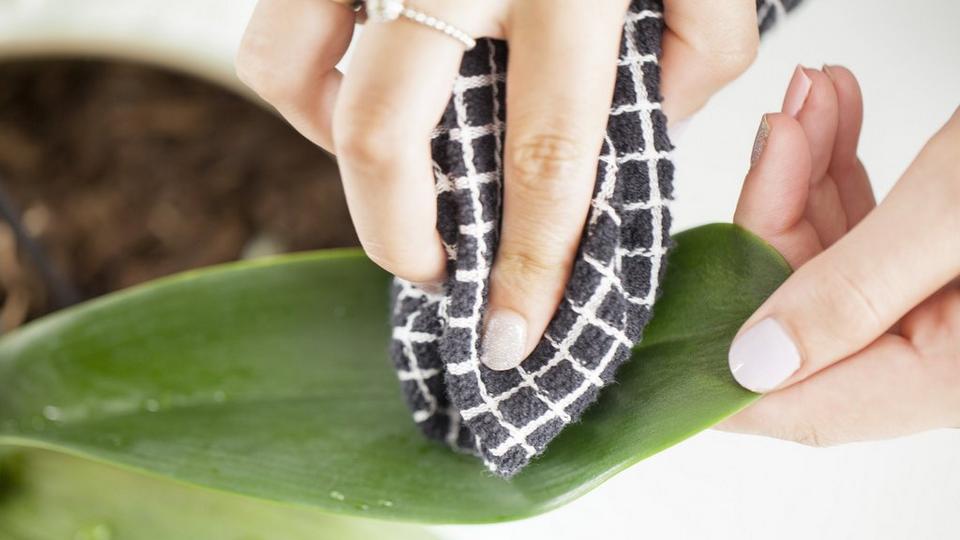
How to tell when to water orchids
Watering can be a little bit of trial and error. Keep in mind that long summer days may require you to water the orchid more and short winter days will require less watering.
Here’s how to tell if the orchid needs water:
- Roots that are green are getting just the right amount of water
- Roots that are soggy and brown are getting too much water
- Roots that are grey or white are not getting enough water
Another easy way to judge if the orchid needs watering is to use your finger to poke deep into the pot:
- If the mix is wet or damp - don’t water it
- If the mix is dry - water it
Humidity
Humidity is important as it recreates the conditions of an orchid’s natural habitat, which of course helps them thrive.
There are multiple ways of creating ideal humidity for your plant but by far the easiest method for indoor orchids is to mist them regularly.
What is Misting?
- Misting is simply spraying an orchid regularly with a fine mist spray bottle.
- Spray the orchid leaves and any aerial roots up to two times a day depending on the plant’s location in your home. This may sound like a lot but water very quickly evaporates. Do a finger test if you’re worried about overwatering.
Avoid plain tap water
If possible, use distilled or water boiled in the kettle and cooled for your mist bottle. Standard tap water is laden with impurities, which can cause the orchids leaves to become covered in white crust. This can be unsightly and can also block moisture from entering the leaf.
How to tell when to mist
Insufficient misting and lack of humidity can lead to a few problems. If you notice any of the following, increase your misting:
- Stunted growth
- Falling flower buds
- Brown-tipped leaves
- Twisted flowers
Ideal light for orchids
Like most plants, optimal light is the absolute key to keeping orchids happy.
Avoid Direct Sunlight
Under no circumstances, place the orchid in direct sunlight, as they will get sunburnt - yes, really!
It can happen in a matter of hours, so keep your eyes on the light the orchid is receiving.
An ideal place for the orchid to live is in a room that stays at a consistent temperature through the day, away from drafts, fruit and where it can receive indirect sunlight.
What’s indirect sunlight?
Indirect sunlight is simply sunlight that has been filtered by bouncing off a wall or through an object before hitting the orchid. If you’re unsure if your location is suitable, the simplest way of measuring light intensity is to use your hand. It sounds strange but, at the height of the day, when the sun is pointing through the window at its brightest (a bright day is best to try this rather than overcast), put your hand a few inches above the plant’s leaves so that you cast a shadow over the plant.



How to prune orchids
How Often Do Orchids Need Pruning?
When the orchid peaks its blooming period, its new flowers will last up to 12 weeks. After this time, they may fade, droop or fall off their stems (spikes) when they are spent.
Once they do this, you will need to determine how to prune the orchid. First, check if the stem is healthy or in poor condition:
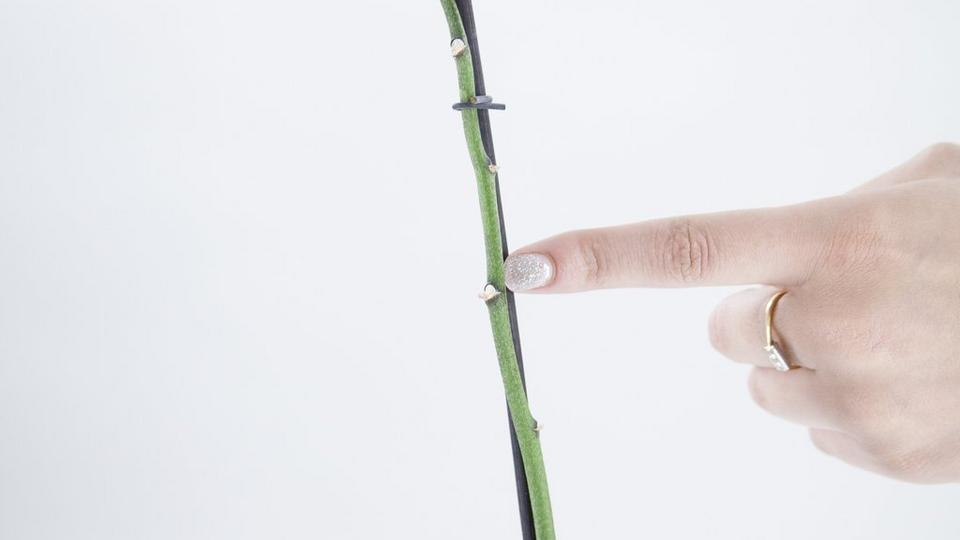
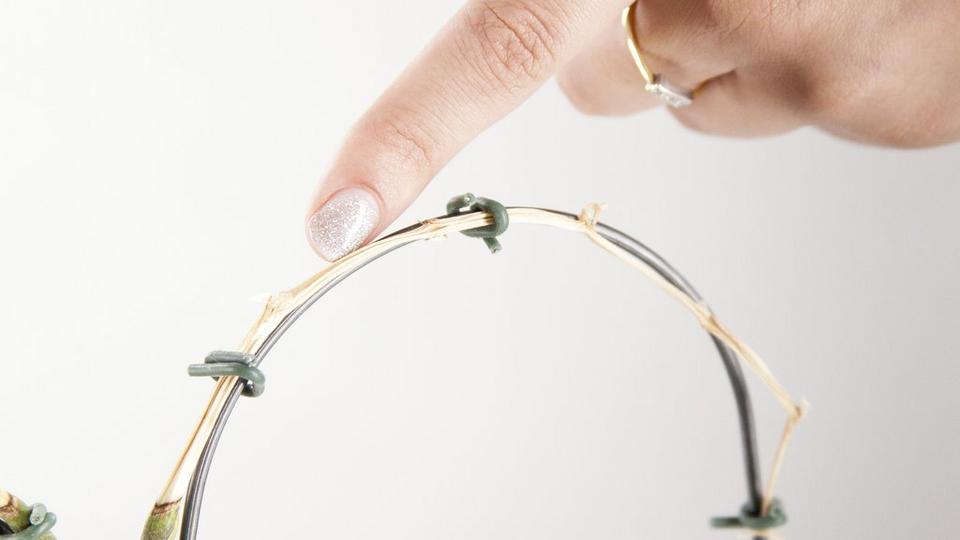
Orchid Pruning Tips
Cutting back an orchid for the first time can seem daunting. Nevertheless, by following the next few tips, you should expect the orchid to produce their beautiful flowers for its next blooming cycle (providing all other care instructions are followed of course!).
- Bear in mind when pruning that orchids are very fragile plants and canÂ’t be handled like you would a shrub. For example, if you partially cut an orchid leaf, the rest of the leaf may die as a result
- With sterilised and sharp shears or a knife, trim away any dead leaves, tissue or roots as well as your stem
- As a rule, if something is still green, it is living
- When you make the cut, be sure to cut diagonally as shown
